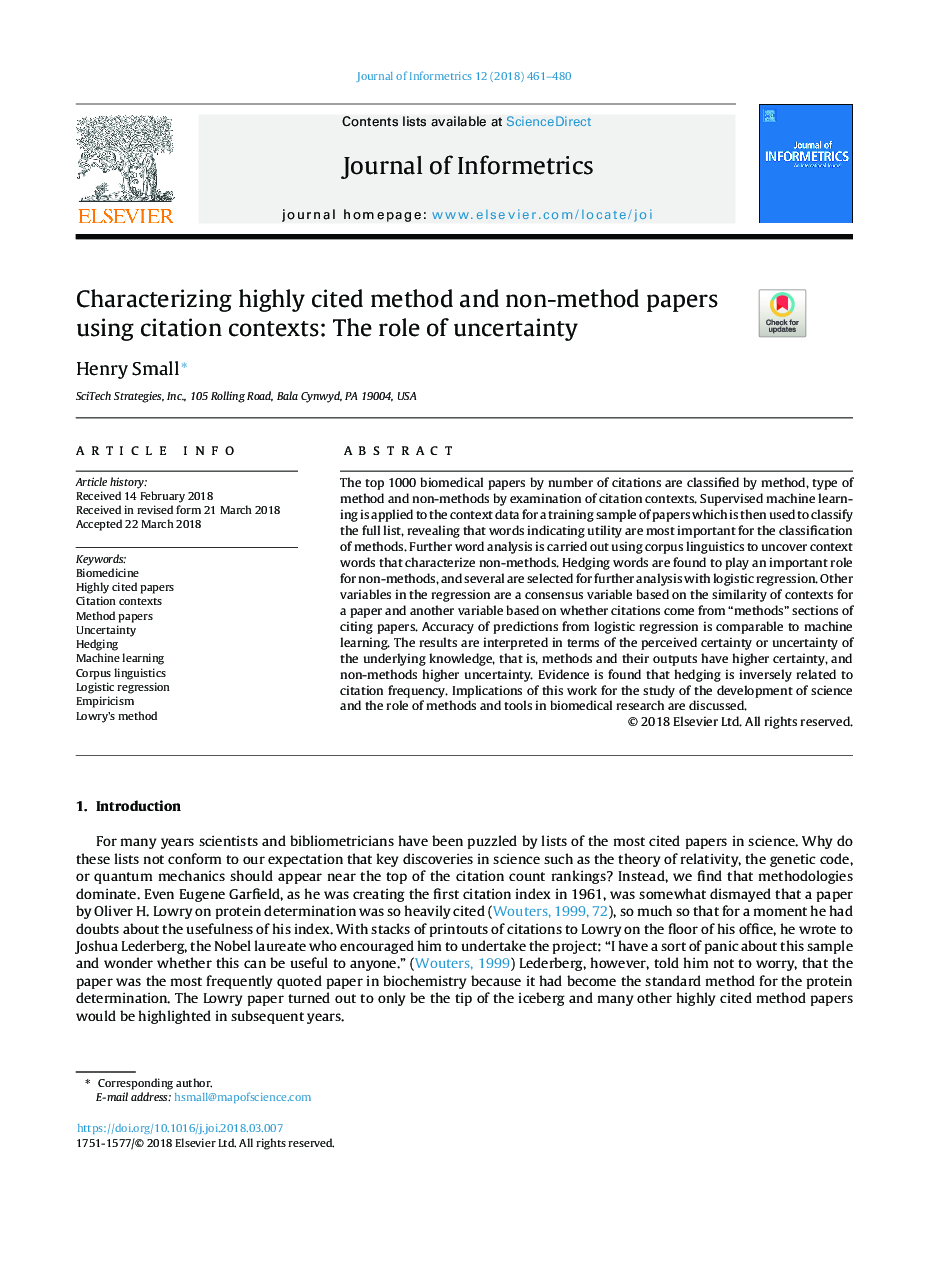| Article ID | Journal | Published Year | Pages | File Type |
|---|---|---|---|---|
| 6934101 | Journal of Informetrics | 2018 | 20 Pages |
Abstract
The top 1000 biomedical papers by number of citations are classified by method, type of method and non-methods by examination of citation contexts. Supervised machine learning is applied to the context data for a training sample of papers which is then used to classify the full list, revealing that words indicating utility are most important for the classification of methods. Further word analysis is carried out using corpus linguistics to uncover context words that characterize non-methods. Hedging words are found to play an important role for non-methods, and several are selected for further analysis with logistic regression. Other variables in the regression are a consensus variable based on the similarity of contexts for a paper and another variable based on whether citations come from “methods” sections of citing papers. Accuracy of predictions from logistic regression is comparable to machine learning. The results are interpreted in terms of the perceived certainty or uncertainty of the underlying knowledge, that is, methods and their outputs have higher certainty, and non-methods higher uncertainty. Evidence is found that hedging is inversely related to citation frequency. Implications of this work for the study of the development of science and the role of methods and tools in biomedical research are discussed.
Keywords
Related Topics
Physical Sciences and Engineering
Computer Science
Computer Science Applications
Authors
Henry Small,
